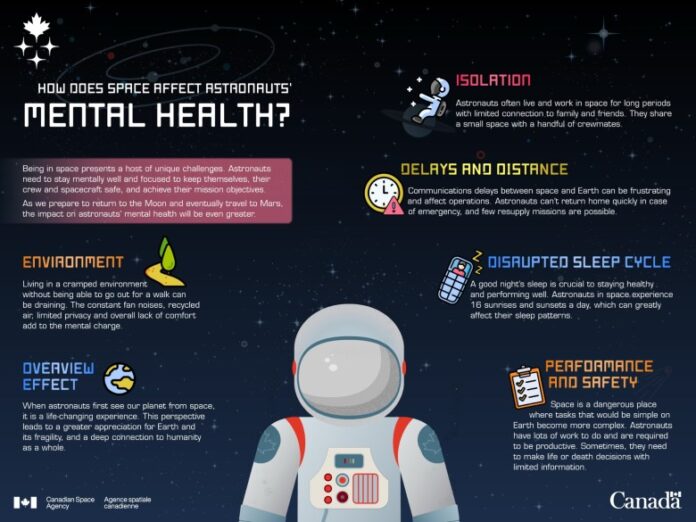When astronaut Joshua Kutryk embarks on his long duration mission to the International Space Station (ISS) sometime next year he’ll participate in four new Canadian science research projects, two of which could have a direct bearing on his physical health.
This week the Canadian Space Agency held a media briefing with Kutryk and representatives of four new science projects to outline the projects.
Dr. Santiago Costantino, Université de Montréal is the principal investigator of the SANSORI-2: Protecting astronaut eye health in microgravity research project. This project stood our for how important the research is for astronauts on long duration missions.
The CSA says the “SANSORI-2 experiment will seek to discover the factors involved in vision changes that some astronauts experience on the International Space Station (ISS).”
It’s not first time Canada or its partners have looked into the problem. Canada’s last astronaut on the ISS, David Saint-Jacques, also participated in research on eye health.
And while all four projects are endorsed by Kutryk, one in particular could lead to further insights into how to deal with astronaut eye health.
During the briefing I asked Dr. Costantino about any possible long term affects the astronauts had with their eyes. He said, “75% have some symptom during their flight” and “most of them will do okay a few weeks or months after they come back.” However he did say for a few that are “unlucky, it can be long and bad” as they recover from the effects of microgravity. He added that “our study have shown that even though it’s not easy to notice, most times don’t come back to normal, but that doesn’t mean that their vision is severely impaired.”
As for Kutryk, I asked if this is a topic he had discussed with other astronauts. He said, “yes, we as a crew member, we spend a significant amount of time on this one pre-flight, and there’s a couple other examples as well, spatial motion sickness, things like that. But with this one in particular, we do spend time talking to both medical professionals, my flight surgeon and their team, as well as colleagues.”
He then elaborated saying, “But with this one in particular, we do spend time talking to both medical professionals, my flight surgeon and their team, as well as colleagues. So people I know who’ve gone done these long duration missions and then come back trying to just anticipate, trying to be ready. To give you a practical example, one of the things we’ll do is we’ll actually fly to space station. I don’t wear corrective lenses now, but when I fly, I’ll have a package with me that will have several different prescriptions in them to cover us across a different variety of contingencies that could happen with this particular sans issue. So the answer is yes, we do spend time trying to prepare as much as we can for it, although the ultimate test, of course, can’t be done until you get there.”
And when Kutryk comes back to Earth he’ll begin a “post flight regiment that is mostly structured around rehabilitation and part of that is eyesight.” As part of that recovery regimen he won’t be driving or flying until cleared to do so.
The other projects selected for Kutryk’s mission include:
